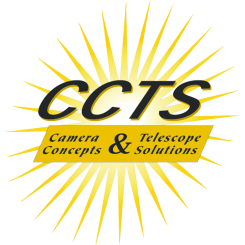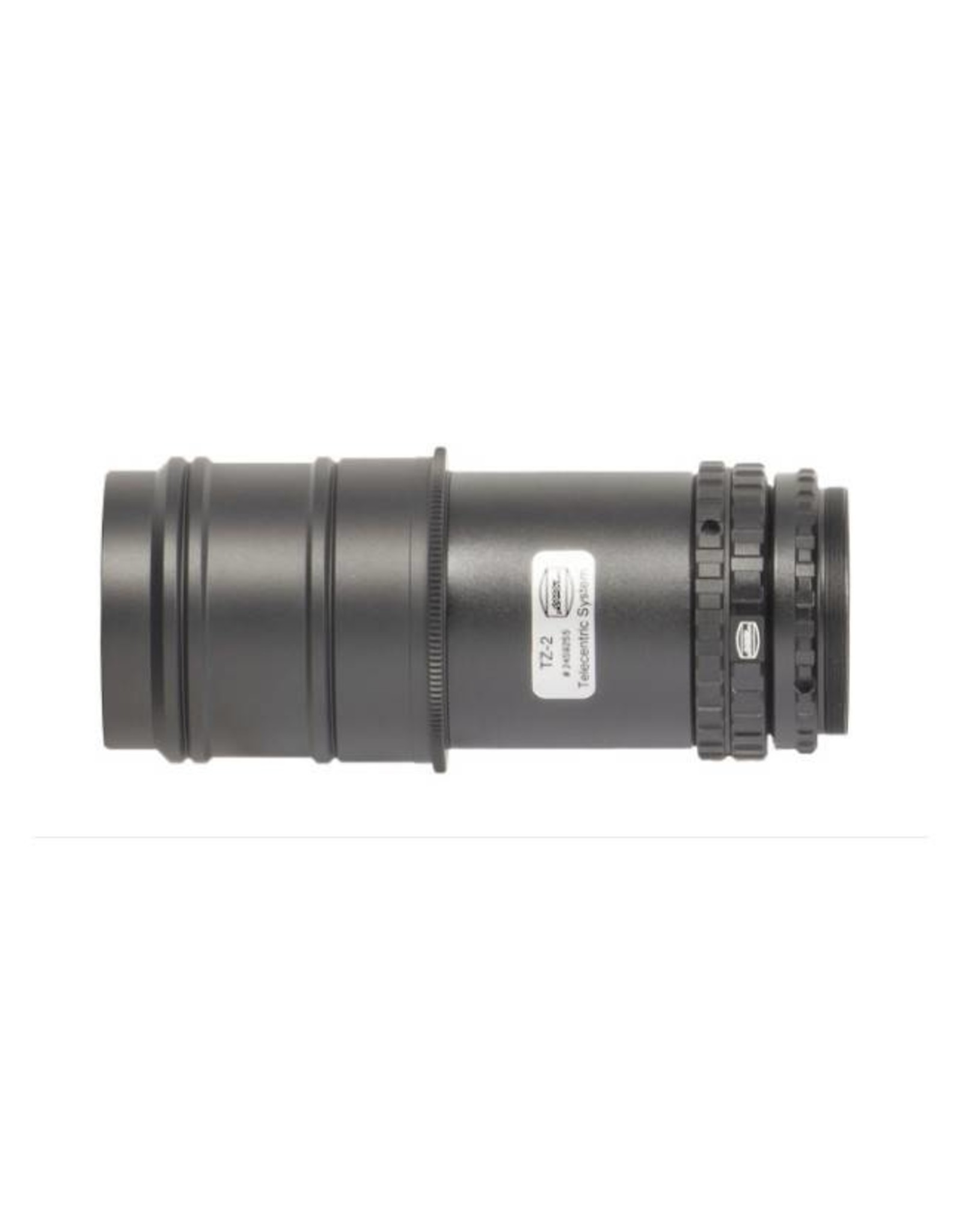Baader Planetarium TZ-2 Telecentric System - TZ-2
| Article number: | TZ-2 |
| Availability: | More on the Way to us |
| Delivery time: | More on the Way to us |
Baader Planetarium has designed a new optimized telecentric system for use with Solar Spectrum H-Alpha systems. A telecentric system is used to convert shorter focal ratio telescopes to the desired f/25 or greater beam needed by the rear mounted Solar Spectrum filter. More than a barlow lens or barlow lens based system, the Baader telecentric ensures that the output beam maintains a consistent normal incident angle across the full filter width. The result is a consistent bandwidth and high image contrast across the field of view. This lens system has been optimized to maintain an exceedingly high optical quality for dedicated solar use (>99% strehl at 656.3nm). Simpler barlow or barlow-based systems are not able to produce this level of accuracy or telecentricity. Hard Dielectric IR coatings further help to reject IR energy and protect the rear etalon from excessive heat energy
- 2" outer diameter Telecentric Focal Extension System with T-2 threads on each side.
- Aplanatic lens with 2x focal length extension for a parallel f/30 beam together with ~f/15 optical systems with no field curvature.
- Chiefly designed and made for 656.3 nm H-Alpha, offering 99% Strehl (definition brightness).
2x Telecentric Focal Extender for providing a parallel optical beam, as well as for offering adequate backfocus, in association with any SolarSpectrum H-Alpha filter.
Telecentric optics are often mistaken for barlow lenses. Each can be used to enhance focal length. Telecentric systems are made to have the exit pupil ostensibly positioned at infinity. This means that from any point in the field, the center ray seems to come from infinity and is thus perpendicular to the image plane and parallel to the optic axis, causing the off-axis beam to reach the image plane with an angular geometry identical to the axial rays. All field elements appear as if they are on axis across the image plane. Plus, contrary to barlow lenses, edge field rays are not tipped bundles.
Since all the principal rays over the image plane are perpendicular to the image plane, the rays at the edge of the field will move through an etalon just ahead of the focal plane with precisely the same geometry at the on axis rays. So for an f/30 telecentric optical system, the etalon detects identical geometry clear across the field, while the spectral bandpass does not shift in wavelength over the full field of view.
Starting from an ~f/15 (+2x Telecentric), ~f/10 (+3x Telecentric), or ~f/7.5(+4x Telcentric) aperture ratio, Baader TZ systems produce a parallel beam with an aperture ratio of ~f/30. In the case of highly divergent telescope focal lengths, the telescope's clear objective aperture should be reduced in diameter to the point that the final resulting f/ratio is nearly f/30 again.
When measured from their rear lens, the working distance of the TZ system to the camera sensor ranges from 200 mm for the TZ-2 to 230 mm for the TZ-4 to 250 mm for the TZ-3. This allows for enough space for the H-Alpha filter housing as well as the majority of accessories such as a Baader 2" mirror diagonal or any imaginable camera device. All TZ-coatings are matched to the different lens glass-substrates and optimized for maximum throughput at 656 nm
- Focal Length Extension: 2x
- Usage: H-alpha observation with SolarSpectrum filters
- Inner Connection (Lens Side): T-2 thread (M42x0.75)
- Outer Connection (Eyepiece/Camera Side): T-2 thread (M42x0.75)
- Weight: 12.6 oz. (0.356 kg)




